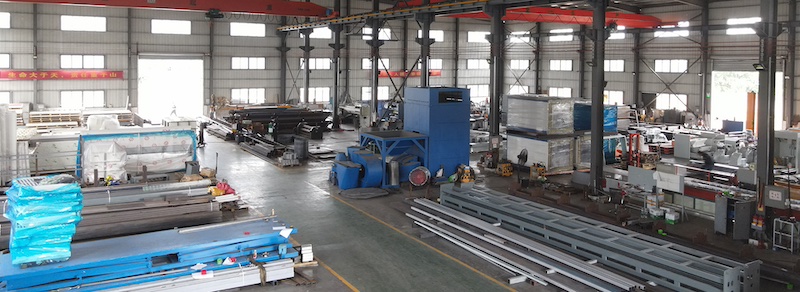What is electrostatic powder coating?
Electrostatic powder coating is a material widely used in metal surface coating. It is different from traditional liquid coating. It uses powdered solid coating and uses electrostatic action to spray it evenly on the surface of the workpiece. The main components of powder coating include resin, curing agent, filler and pigment, etc., which are formed into a powder form suitable for spraying through a certain ratio and blending. Due to its good adhesion, wear resistance, corrosion resistance and other characteristics, electrostatic powder coating has been widely used in many industries such as automobiles, home appliances, and construction.
The coating process of Electrostatic spaying line usually includes pretreatment, spraying, curing and other steps. First, the metal surface needs to be pretreated to remove oil, rust and other contaminants to ensure the adhesion of the coating. Then, a special spray gun is used to spray the charged powder coating onto the surface of the workpiece. Due to the electrostatic effect, the powder can be evenly covered in every corner of the workpiece. Finally, the coating needs to be cured in a high-temperature furnace to convert the powder coating into a hard solid coating.
Compared with traditional liquid coatings, the advantages of Electrostatic spaying line are very obvious. First, powder coatings do not contain solvents, reduce the emission of volatile organic compounds (VOC), and have better environmental performance. Secondly, powder coatings are more efficient because they have a high coating utilization rate and can effectively reduce waste. Finally, the durability of powder coatings is much higher than that of liquid coatings, especially in terms of scratch resistance, heat resistance and corrosion resistance.
What are the application areas of electrostatic powder coatings?
Electrostatic spaying line is widely used in many industries due to its excellent performance, especially those that have high requirements for coating durability and aesthetics.
First, electrostatic powder coatings are widely used in the home appliance industry. Most modern home appliances require corrosion-resistant and wear-resistant exterior coatings, and powder coatings can effectively improve the appearance of home appliances while increasing the service life of products with their excellent adhesion and durability. For example, home appliances such as refrigerators, washing machines and microwave ovens often use powder coatings for exterior coating.
Secondly, in the construction industry, electrostatic powder coatings have also been widely used, especially in the coating of outdoor facilities and decorative materials. Because powder coatings have strong weather resistance and outstanding resistance to ultraviolet radiation, they are widely used in the surface coating of window frames, door frames and other metal structures. In addition, powder coatings are rich and uniform in color, which can meet the diverse needs of architectural design and enhance the aesthetics of the building's appearance.
The automotive industry is another important application area for powder coatings. Electrostatic powder coatings are usually used for the coating of parts such as car bodies, wheels, and interiors. It can not only improve the glossiness of the car's appearance, but also effectively resist the influence of external factors such as stone hitting and rain erosion, extending the service life of the car. Due to the rich color selection and high color saturation of powder coatings, automobile manufacturers often use this feature to create more attractive body colors.
Finally, electrostatic powder coatings are also widely used in other industries such as furniture, sporting goods, and electrical accessories. The versatility and efficiency of powder coatings make it a competitive surface treatment material.
Why do the environmental advantages of electrostatic powder coatings attract attention?
With the improvement of global environmental awareness, many industries are gradually eliminating traditional coatings with high pollution and high volatile organic compounds (VOC). Electrostatic powder coatings have gradually become an ideal choice to replace traditional liquid coatings due to their significant environmental advantages, especially in reducing environmental pollution.
First of all, electrostatic powder coatings do not contain solvents, so no VOC pollution will be generated during production and application. The solvent volatiles in liquid coatings not only pollute the atmosphere, but may also harm the health of workers. Powder coatings avoid this problem and comply with increasingly stringent environmental regulations and standards. As governments around the world pay more attention to environmental protection, many places have begun to restrict solvent-based coatings, which undoubtedly promotes the development of the powder coating market.
Secondly, the coating process of electrostatic powder coatings has a high material utilization rate. Traditional liquid coatings tend to produce a large amount of volatiles during spraying, which not only wastes coatings but also increases the cost of coating operations. The utilization rate of electrostatic powder coatings is usually above 90%, which reduces coating waste and improves construction efficiency. Therefore, powder coatings not only help reduce environmental pollution, but also help companies reduce production costs.
In addition, the recycling of powder coatings has also received widespread attention. During the coating process, powder coatings that fail to adhere to the surface of the workpiece can be recycled and reused through special equipment. Through this recycling, powder coatings can greatly reduce the generation of waste in the production process and further reduce the burden on the environment.
The environmental advantages of electrostatic powder coatings are not only reflected in reducing VOC emissions, but also in promoting the coatings industry to develop in a greener and more sustainable direction by improving material utilization and recycling. This feature makes it an important development direction for the future coatings industry under the background of increasingly stringent environmental regulations.


